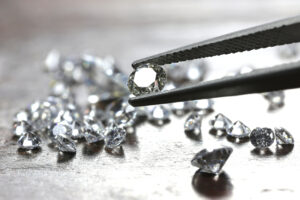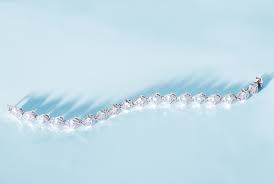
There are a lot of questions to consider when it comes to buying a diamond. Amidst the questions of carat weight, cut, or clarity, have you ever considered choosing between a lab-grown or mined diamond?
Mined diamonds are formed deep inside the earth’s surface, through the combination of extreme pressure and heat applied over billions of years, and then brought to the surface by volcanic eruptions. Until recently, this natural phenomenon was the only way that a diamond could be created. But as technology has advanced, scientists can now duplicate this process in a highly controlled laboratory environment using specialized equipment.
Like what happens 100 miles underneath the Earth, lab diamonds are created as carbon atoms bond together to form a diamond crystal, which is then cut into a sparkly diamond. And just like Earth-made diamonds, they have unique characteristics, including carat weight, color, or clarity. The only difference between the two diamonds is their origin (the Earth versus a laboratory) and how long they take to make (billions of years versus 6-10 weeks)!

Not to be confused with gemstones such as the moissanite or cubic zirconia, lab-grown diamonds are 100% genuine diamonds. The cubic zirconia is a colorless synthetic gemstone often used to mimic diamond. They are easily spotted when held underneath a light. Cubic zirconia reflects light at a much lower rate, so their sparkle is just not comparable to that of a diamond. They reflect a rainbow of light as opposed to white light (a.k.a. brilliance).
The same goes for Moissanite: a laboratory-created gemstone with an entirely different genetic makeup from that of a diamond. Moissanite is known for its “disco-ball” effect as it also emits a rainbow of colors as opposed to a diamond’s white light. These two diamond substitutes have their pros and cons, but they have no connection to a diamond.
This is not the case with lab-grown diamonds. Lab-grown diamonds are identical to mined diamonds in every single way. They share the same chemical composition, light refractions, hardness, and density, to name a few elements. The untrained and even trained eye can’t notice a difference – because there isn’t any!
Some rather expensive equipment is being developed to distinguish lab-grown diamonds from mined by tiny internal differences caused by their growth patterns, but most jewelers will not have this to hand. Lab-grown diamonds are graded for cut, color, and clarity using the same scales as a mined diamond, and many will come with certificates. Many lab-grown diamonds will also have an inscription on the girdle that identifies them as lab-grown.
Given the efficiency of technology, these lab-grown diamonds reduce the cost, time, and equipment required to become the dazzling gemstones we love to wear. Mining the earth for diamonds has a tremendously negative impact on the environment. Mining requires extensive machinery that erodes soil, ruins forests, and overall causes devastating ecological destruction. You can have peace of mind wearing lab-grown diamonds, knowing they don’t cause damage to the earth and are not involved with humanitarian or ethical concerns.
Since it requires less expense to grow diamonds rather than mine them from the Earth, they are more affordable. You can purchase a larger diamond of higher quality for the same price when investing in lab-grown diamonds.
If you own lab-grown diamond jewelry and are looking an appraisal for either insurance, estate, or other purposes, contact us today! our independent appraiser, Elliot Grunwald, is available from 11AM-4PM Tuesday through Saturday. You can also find beautiful lab-grown and mined diamonds at Leo Hamel Fine Jewelers. They offer a tremendous selection of dazzling diamond jewelry for every taste and budget.